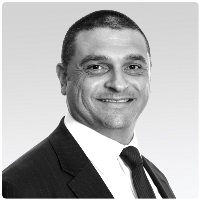By Nicholas Ali, Executive Manager
SMSF Technical Support
 Changes to the contribution rules presents a window of opportunity for older Australians.
Changes to the contribution rules presents a window of opportunity for older Australians.
The work-test requirement has been pushed out to age 67, and the ability to trigger the two year bring-forward rule for non-concessional contributions has now also been extended to people age 67.
The change, as part of the Treasury Laws Amendment (More Flexible Superannuation) Bill 2020, applies retrospectively to non-concessional contributions made from 1 July 2020.
Importantly, there have been no corresponding increases to the preservation age which determines when you can make lump sum withdrawals from super.
When a person turns age 65, they’ve triggered a condition of release meaning all their superannuation benefits can be accessed and withdrawn from super. This means we have opportunity between the ages of 65 and 67 to utilise a recontribution strategy.
Richard turned 65 on 18/08/2021 and has just retired and commenced an account-based pension valued at $1,000,000 from his SMSF with the following components:
Taxable Component – 70% ($700,000)
Tax-Free Component – 30% ($300,000)
Richard is the sole member of his SMSF and has a binding death benefit in favour of his Legal Personal Representative (Executor) for the entirety of his superannuation benefits. Richard has two adult children who will receive 50% each from his estate as per his recently updated Will.
If Richard passed away, and a superannuation death benefit of $1,000,000 was paid to his estate, the tax payable would be:
Taxable Component: $700,000 x 15% = $105,000
Tax-Free Component – $300,000 x 0% = $0
By comparison, if Richard had put in place a binding death benefit nomination to his adult children (50% each again), the total tax payable on the $1,000,000 in superannuation death benefits would be:
$119,000 (15% + 2% Medicare Levy x $700,000)
So, what can Richard do to minimise the tax payable on his superannuation in the event of his untimely demise?
In the 2021/22 financial year, Richard will complete the following transactions:
• Commence Account-Based Pension 1 (e.g. on 1 July 2021) for the full amount of $1,000,000 in his accumulation account.
• Withdraw at least the required minimum amount (or pro-rata minimum) for the period from 1 July 2021 to 30 June 2022 (let’s say he withdraws $110,000).
• As Richard has commenced an Account-Based Pension, he has no maximum drawdown.
• Re-contribute the $110,000 as a non-concessional contribution in June 2022 and immediately commence Account-Based Pension 2 (no minimum drawdown required prior to 30 June 2022 if a pension commences in June).
In the 2022/23 financial year, Richard will complete the following transactions:
• Withdraw at least the required minimum amount for the period from 1 July 2022 to 30 June 2023 for both Account-Based Pension 1 and 2
• Draw anything above the minimum from Account-Based Pension 1 (again let’s say he draws $110,000 in total)
• Re-contribute the $110,000 as a non-concessional contribution in June 2023 and immediately commence Account-Based Pension 3 (no minimum drawdown required prior to 30 June 2023 if pension commenced in June).
In the 2023/24 financial year, Richard will complete the following transactions:
• Withdraw the required minimum pension for the period from Account-Based Pensions 1, 2 & 3
• Withdraw anything above the minimum from Account-Based Pension 1 (let’s say $330,000 in total)
• Re-contribute the $330,000 as a non-concessional contribution prior to turning age 67 on 18/08/2023 and immediately commence Account-Based Pension 4 (as it’s not expected Richard will meet the work test in the 2024/25 financial year)
• Withdraw the minimum from Account-Based Pension 4 for the period 18 August 2024 to 30 June 2025.
For administrative simplicity, the 3 new Account-Based Pensions (2, 3 & 4) can be consolidated into a single Account-Based Pension (5). Importantly, each financial year the SMSF would need to lodge the relevant pension commencement transactions with the ATO under the transfer-balance cap reporting regime (TBAR).
As Richard’s total superannuation balance is $1m then the TBAR reporting would be required quarterly. If the re-contribution strategy is implemented for Richard following the above steps, he will end up with the following two Account-Based Pensions as at 18 August 2024:
• Account-Based Pension 1 – $450,000 ($315k taxable / $135k tax free)
• Account-Based Pension 5 – $550,000 ($550k tax free)
The actual balances above will be higher or lower depending on the earnings of the SMSF across the three years the re-contribution strategy was implemented. By withdrawing and re-contributing $550,000 over the three-year period, Richard has converted $385,000 taxable component to tax-free component.
This reduces the future death benefits tax on his superannuation balance by an estimated $57,750 ($385,000 x 15% tax). It also provides Richard with an element of legislative risk mitigation, should the government make pension income taxable again (this is due to the tax-free component forming part of the Deductible Amount).
Moving forward, if Richard draws out more from his SMSF than the minimum pension amount, the most suitable drawdown strategy would be for him to take the minimum from Account-Based Pension 5.
Any amounts required above the minimum should be taken from Account-Based Pension 1 to use up the pension with the highest taxable component first.
If the fund does not have the cash to undertake the pension strategy, a partial commutation can be implemented. This may be likely in the third year of the strategy.
For fortnightly insights, follow our podcast SMSF Adventures with SuperConcepts hosted by Jessica Griffith as she speaks to some of the greatest minds in the industry, to deliver the information that matters.
Follow the show on Spotify or Apple Podcast.
To learn more about how our range of SMSF services phone us on 1300 023 170 or request a call back.
Alternatively click through to view our range of services for trustees, accountants and advisers.